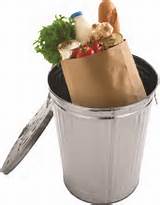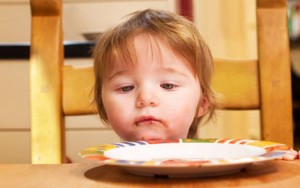Submitted by Gabby Byrne for Thurston County Solid Waste
 True confessions. My family has wasted a lot – and I mean a lot – of food. I never felt good about it. After all, I was raised in the “don’t you know there are children starving?” era. But it wasn’t until I started working on the Waste Less Food campaign for Thurston County Solid Waste that I really began to examine the cause and effect of my family’s wasted food.
True confessions. My family has wasted a lot – and I mean a lot – of food. I never felt good about it. After all, I was raised in the “don’t you know there are children starving?” era. But it wasn’t until I started working on the Waste Less Food campaign for Thurston County Solid Waste that I really began to examine the cause and effect of my family’s wasted food.
American households – households! – throw out about 25 percent of the food they buy. That means that for every four bags of groceries you bring home, one entire bag finds its way into the garbage. Estimates on the money you lose this way are a bit astonishing. We’re talking $1,300 to $2,300 a year. If we go middle of the road on those amounts, that’s about $130 a month. That’s your kid’s piano lessons. Annually, it’s that beach vacation you’ve been hoping to take… and we’re putting the money in the trash.
Then there’s the environmental cost of wasted food. This one is a shocker. To start, 25 percent of all fresh water consumption gets wasted along with that food we chuck out. That’s enough water to fill 70 million Olympic-size swimming pools. Seriously. Consider that it takes 1,000 gallons of water to make one gallon of milk, and you begin to see where I’m going with this. Roughly 24 million acres are deforested worldwide every year to grow food. It takes 2.5 billion acres worldwide just to grow the food we waste. We use 300 million barrels of oil to produce that same food. The carbon dioxide and methane produced by wasted food in landfills is double what’s produced by all air traffic.
 If all of that isn’t enough to convince you that wasted food is one of the biggest problems facing our country, consider the social costs. There are an estimated 50 million hungry people in the United States. If we reduced the food we waste by just 15 percent, we could feed half of them. What we consumers do has a real effect on food supplies and prices. Large amounts of resources are needed to produce, package and transport food. Use of these resources has real financial and environmental costs. When consumer demand increases (for food we eat or for food we throw out), costs go up. So whether you are a single mom trying to make ends meet or a food bank using donated funds to buy food, your dollar is not going to stretch as far.
If all of that isn’t enough to convince you that wasted food is one of the biggest problems facing our country, consider the social costs. There are an estimated 50 million hungry people in the United States. If we reduced the food we waste by just 15 percent, we could feed half of them. What we consumers do has a real effect on food supplies and prices. Large amounts of resources are needed to produce, package and transport food. Use of these resources has real financial and environmental costs. When consumer demand increases (for food we eat or for food we throw out), costs go up. So whether you are a single mom trying to make ends meet or a food bank using donated funds to buy food, your dollar is not going to stretch as far.
These are big problems, but they’re fixable problems. If I’ve managed to convince you that this is important, but you’re wondering what to do about it, don’t despair. There are some simple changes you can make at home that will save you money and help you waste less food. In fact, Thurston County Solid Waste has rolled out the Waste Less Food campaign to help you do just that.
Take the Waste Less Food Challenge and find out how much food your family really wastes. Then, when you’ve looked the cold, hard truth in the eye, Solid Waste will give you easy-to-implement tools, tips and tricks to help you waste less. You’ll also get a free Food Saver Kit. My family took the challenge and we are making steady improvement on wasting less food at home.
Save money. Help your community. Waste Less Food. Involve your family, neighbors, friends, and coworkers. Let’s see how big we can make this. Look for us at community events or schedule us to come give a presentation to your group. For more information, or to start your challenge, visit Waste Less Food online. Be sure to “like” our Waste Less Food Facebook page to share ideas and be entered for weekly drawings.



















































